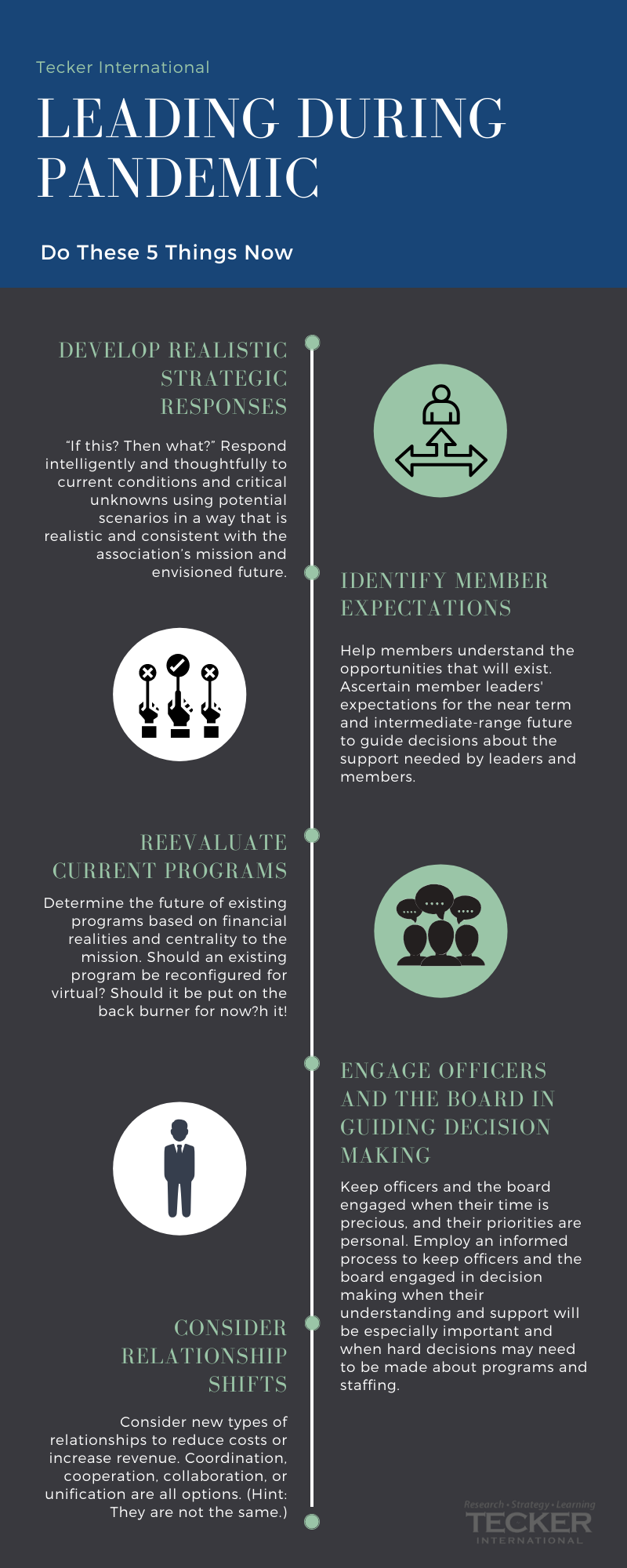Leading during a crisis is hard.
There’s no avoiding it. Leading during a pandemic is a challenge.
If communication with the Board was tense before, it likely hasn’t improved with the introduction of a global health crisis. Chances are high that communications around the annual meeting aren’t a lot of fun, either.
Whether dealing with complications on the staff side or managing concerns with volunteers, acting as an association executive right now might have you wrestling with some overwhelming questions.
We are always learning leadership lessons.
On the playground, when not practicing social-distancing, children can still be found playing “follow the leader” and other games. They are honing their decision-making skills and learning foundational lessons that will help them make better decisions on the playground and in life.
It’s natural. Humans are built this way. Children inherently know that in order to move things along, to make recess fun as quickly as possible, to look for the voice in their group that tells them the game they’ll play for that break.
As we evolve from the playground into the boardroom, we experience a variety of styles and outcomes in the leaders around us. We identify our own strengths and weaknesses as leaders. What we expect from those at the top can shift with our experience.
Over the years, we discover that expectations for leaders to “move things along” persist, though. Organizations continue to look to their leaders when a tough decision must be made during difficult times. Especially during difficult times.
It is during the roughest seas that a ship most needs its captain.
This is the time of leaders.
During times of crisis when emotions can run high, the thoughtful approach of a leader can make all the difference.
Maybe you read this recent interview, Leading During a Pandemic: Keys To Recession Readiness. Or listened to our talk about preparing for a recession. Perhaps you caught this active discussion on asking the right questions! Even if you participated in all three, chances are good you could still use some guidance on options for making better decisions. The best leaders never stop learning.
Here is what you need to do first.
- Develop realistic strategic responses – “If this? Then what?” Respond intelligently and thoughtfully to current conditions and critical unknowns using potential scenarios in a way that is realistic and consistent with the association’s mission and envisioned future.
- Identify member expectations – Help members understand the opportunities that will exist. Ascertain member leaders’ expectations for the near term and intermediate-range future to guide decisions about the support needed by leaders and members.
- Reevaluate current programs – Determine the future of existing programs based on financial realities and centrality to the mission. Should an existing program be reconfigured for virtual? Should it be put on the back burner for now?
- Engage officers and the board in guiding decision making – Keep officers and the board engaged when their time is precious, and their priorities are personal. Employ an informed process to keep officers and the board engaged in decision making when their understanding and support will be especially important when hard decisions may need to be made about programs and staffing.
- Consider your relationships – Examine relationships with an eye on reducing costs or increasing revenue. Coordination, cooperation, collaboration, or unification are all options. (Hint: They are not the same.)
Use leadership tools for knowledge-based decisions.
During a global health pandemic like we are in now, what are the leadership tools that can help us make better decisions?
At TI, we work with clients using leadership tools on:
- program assessment
- new opportunity discovery
- financial decisions based on value to members
- partnerships and new relationships
- critical issues strategy
Stay tuned.
In the coming weeks, we’ll be posting more about some of these leadership tools. Please visit and read stories about how we’re using them with clients today.
To learn more about these tools, ask a question, or find out how to work with us; contact us at info@tecker.com.


